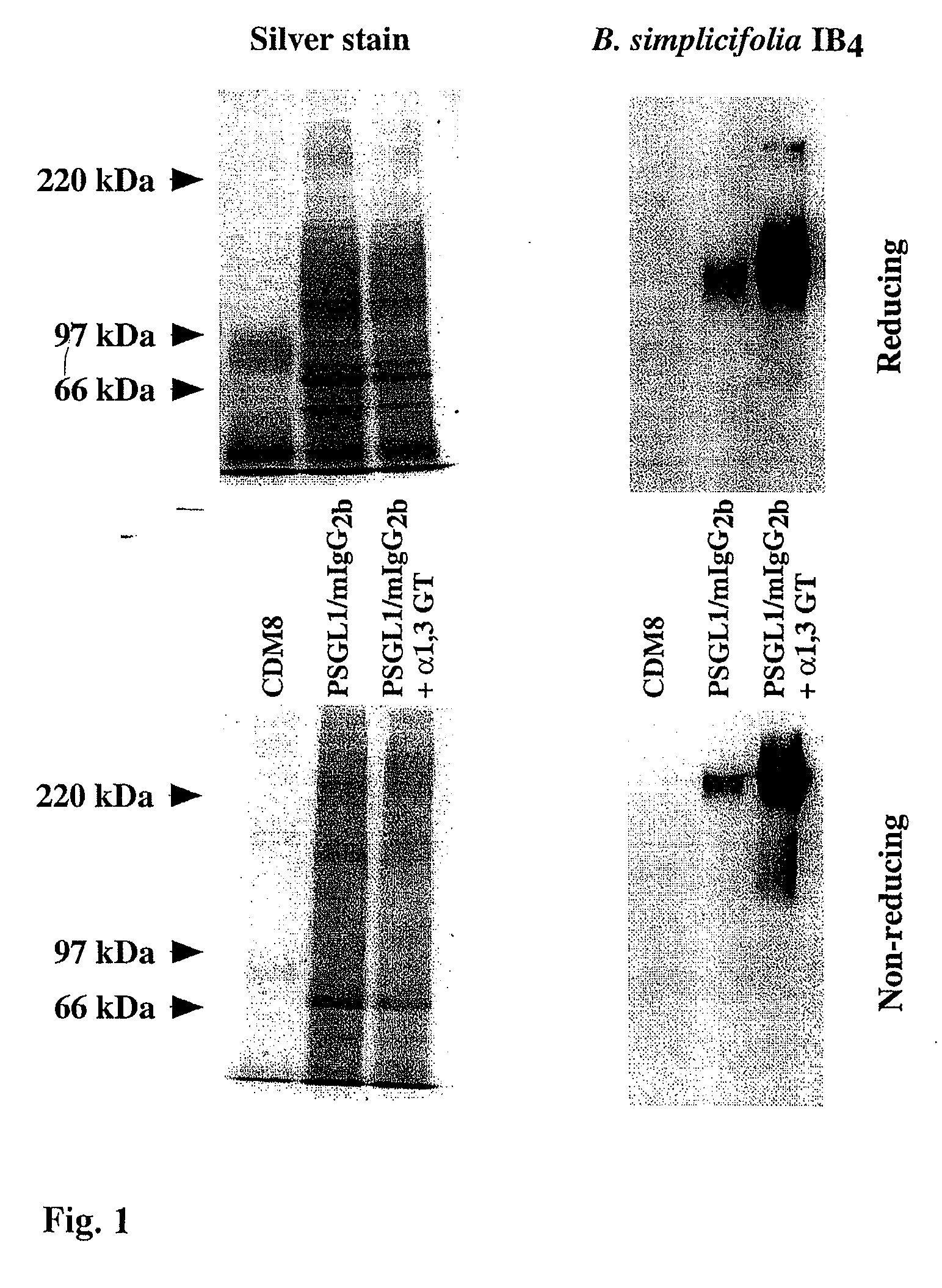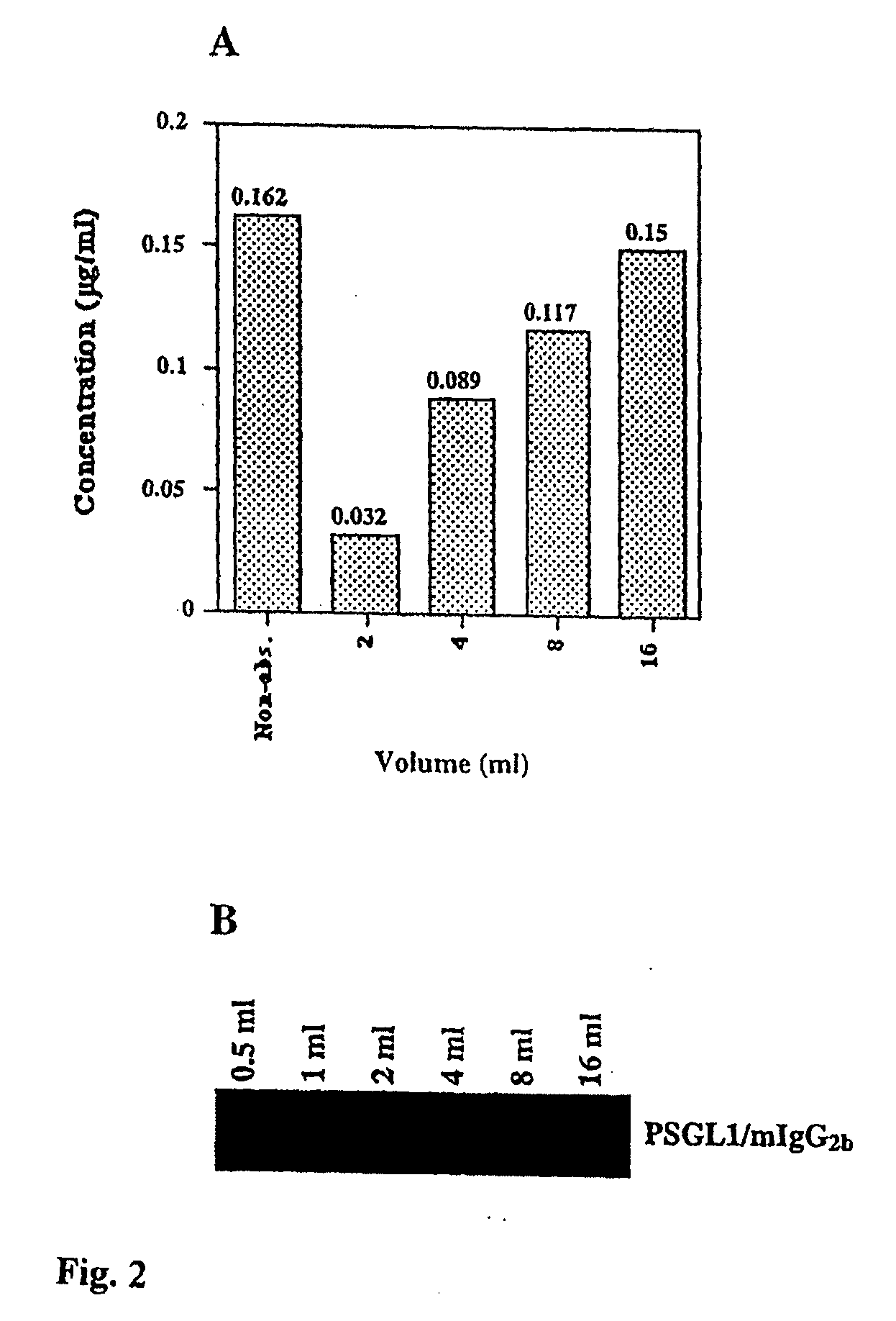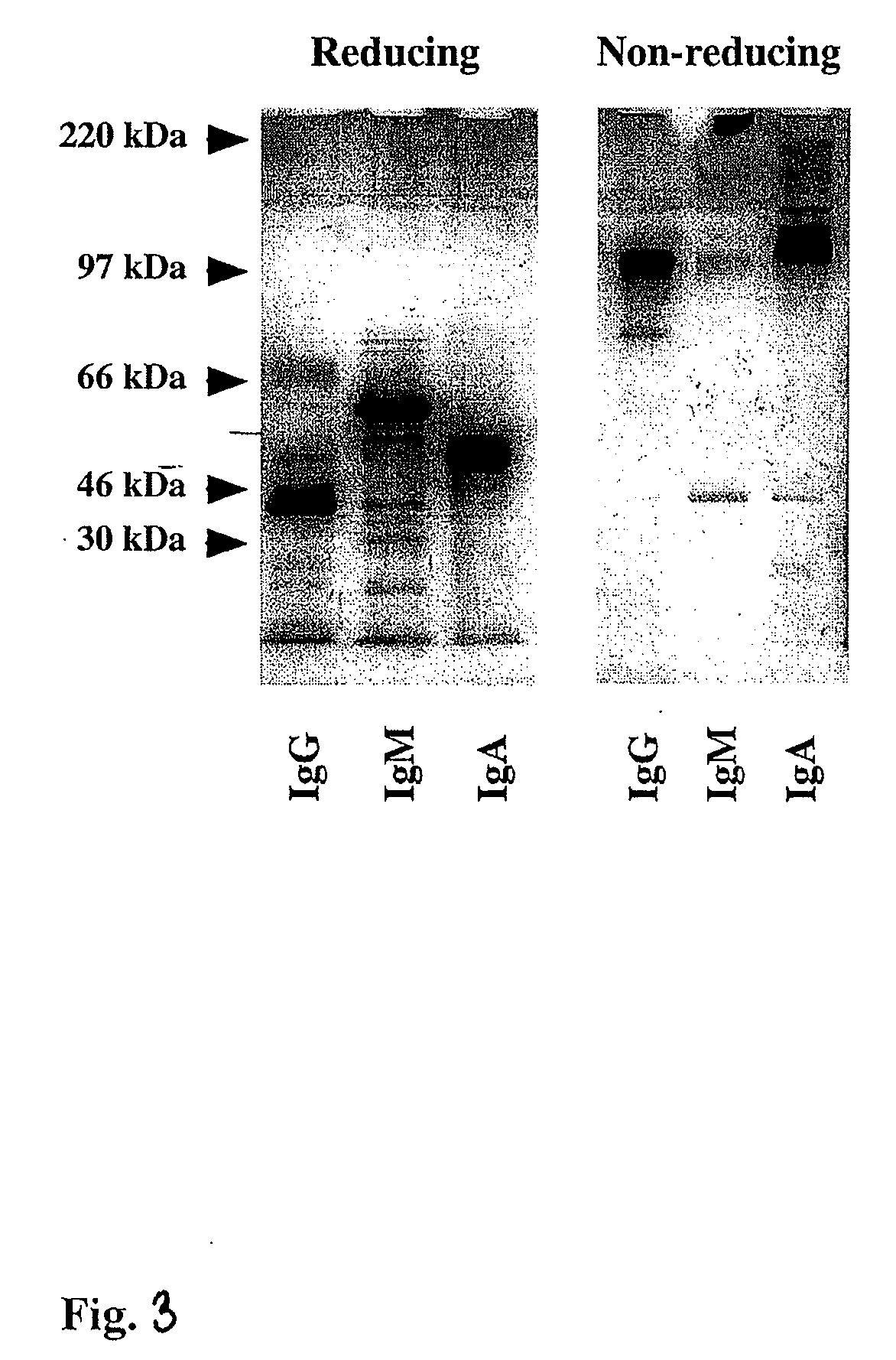Compositions and methods for inhibiting toxin a from clostridium difficile
- Summary
- Abstract
- Description
- Claims
- Application Information
AI Technical Summary
Benefits of technology
Problems solved by technology
Method used
Image
Examples
example 1
Transient Expression of Substituted Recominant P-Selectin Glycoprotein Ligand / Immunoglobulin Fusion Proteins
General Methods
[0101]Cell culture COS-7 m6 cells (35) were passaged in Dulbecco's modified Eagle's medium (DMEM), with 10% fetal bovine serum (FBS) and 25 μg / ml gentamicin sulfate.
Construction of expression vectors
[0102]The porcine α 1,3 GT (37-39) was PCR amplified off pig spleen cDNA using a forward primer having six codons of complementarity to the 5′ end of the coding sequence, a Kozak translational initiation concensus sequence and a Hind3 restriction site, and a reverse primer with six codons of complementarity to the 3′ end of the coding sequence, a translational stop and a Not1 restriction site. The amplified α 1,3GT cDNA was cloned into the polylinker of CDM8 using Hind3 and Not1 (35). The P-selectin glycoprotein ligand-1 (PSGL-1) a highly glycosylated mucin-type protein mediating binding to P-selectin (40) coding sequence was obtained by PCR off an HL-60 cDNA library...
example 2
Stable Expression of Substituted Recominant P-Selectin Glycoprotein Ligand / Immunoglobulin Fusion Proteins
General Methods Cell Culture
[0110]CHO-K1, COS7m6, and 293T cells were cultured in Dulbecco's modified Eagle's medium (DMEM) with 10% fetal bovine serum (FBS) and 25 μg / ml gentamicin sulfate. The selection media contained puromycin (cat. no. P7255; Sigma, St. Louis, Mo. 63178), hygromycin (cat. no. 400051; Calbiochem, La Jolla, Calif. 92039), and G418 (cat. no. G7034; Sigma, St. Louis, Mo. 63178) as indicated below.
Construction of Expression Plasmids
[0111]The porcine α1,3GalT (Gustafsson, K. et al., 1994) and PSGL-1 / mIgG2b expression plasmids were constructed as described (Liu, J. et al., 1997). The C2 GnTI cDNA was amplified by PCR from an HL60 cDNA library using cgcgggctcgagatgaagatattcaaatgt (SEQ ID NO: 2) and cgcggggcggccgctcatgatgtggtagtgagat (SEQ ID NO: 3) as forward and reverse primers, respectively. The vectors used to generate stable transfectants were bidirectional havin...
example 3
Expression Vectors
[0127]Exemplary expression vectors useful in the production of the fusion polypeptides are as follows:
TABLE 3Core 2 beta1-6 GlcNAc transferase Expression vector(SEQ ID NO: 4; 4917 nucleotides) 1GGCGTAATCT GCTGCTTGCA AACAAAAAAA CCACCGCTAC CAGCGGTGGT 51TTGTTTGCCG GATCAAGAGC TACCAACTCT TTTTCCGAAG GAACTGGCTT 101CAGCAGAGCG CAGATACCAA ATACTGTCCT TCTAGTGTAG CCGTAGTTAG 151GCCACCACTT CAAGAACTCT GTAGCACCGC CTACATACCT CGCTCTGCTA 201ATCCTGTTAC CAGTGGCTGC TGCCAGTGGC GATAAGTCGT GTCTTACCGG 251GTTGGACTCA AGACGATAGT TACCGGATAA GGCGCAGCGG TCGGGCTGAA 301CGGGGGGTTC GTGCACACAG CCCAGCTTGG AGCGAACGAC CTACACCGAA 351CTGAGATACC TACAGCGTGA GCTATGAGAA AGCGCCACGC TTCCCGAAGG 401GAGAAAGGCG GACAGGTATC CGGTAAGCGG CAGGGTCGGA ACAGGAGAGC 451GCACGAGGGA GCTTCCAGGG GGAAACGCCT GGTATCTTTA TAGTCCTGTC 501GGGTTTCGCC ACCTCTGACT TGAGCGTCGA TTTTTGTGAT GCTCGTCAGG 551GGGGCGGAGC CTATGGAAAA ACGCCAGCAA CGCCGAATTA CCGCGGTCTT 601TCGGACTTTT GAAAGTGATG GTGGTGGGGG AAGGATTCGA ACCTTCGAAG 651TCGATGACGG CAGATTTAGA GTCTGCT...
PUM
 Login to View More
Login to View More Abstract
Description
Claims
Application Information
 Login to View More
Login to View More - R&D
- Intellectual Property
- Life Sciences
- Materials
- Tech Scout
- Unparalleled Data Quality
- Higher Quality Content
- 60% Fewer Hallucinations
Browse by: Latest US Patents, China's latest patents, Technical Efficacy Thesaurus, Application Domain, Technology Topic, Popular Technical Reports.
© 2025 PatSnap. All rights reserved.Legal|Privacy policy|Modern Slavery Act Transparency Statement|Sitemap|About US| Contact US: help@patsnap.com



